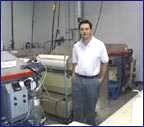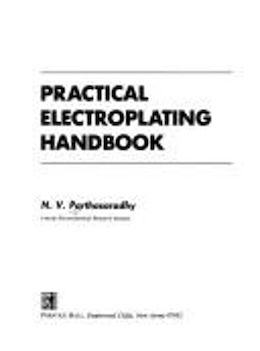
-----
Chemical formula for chromating solutions
Q. Can anyone suggest the chemical formulation for plain yellow, olive drab and black passivation on zinc plating?
Rajesh Kumar- Maraimalainagar, India
2001
A. All of these passivations are based on hexavalent chromium. Hex chrome can be written as Cr+6. Hexavalent chrome is the main active chemical, but there are other additives. Specific chromate bath formulations are closely guarded proprietary information. There are many plating chemical suppliers who are in the business of researching better passivate bath formulations and then selling them. The major difference in the different colors is the thickness of the passivate layer. If you want a different color, sometimes all you need to do is dip your parts longer in the passivate bath.

Tim Neveau
Rochester Hills, Michigan
2001
Q. Dear sir,
Please give me Dark but shiny yellow passivation making formulation.
- Ahmednagar Maharashtra India
September 3, 2014
August 2014
A. Hi Suryawanshi. Chromate conversion coating chemistry has been proprietary for more than 60 years, so you'll have to go back awfully far. My 1976 "Finishing Handbook and Directory" only says that they contain hexavalent chromium and a mineral acid and sometimes an organic acid. But N.V.Parthasaradhy's "Practical Electroplating Handbook".
says 200 g Potassium Dichromate and 4 ml sulfuric acid to 1 liter of water. Note that this will not be RoHS complaint.
If you'd like to really understand chromate conversion coatings, Biestek & Weber's "Electrolytic and Chemical Conversion Coatings" has a 125-page chapter on the subject, but even this is probably dated because of the shift to RoHS-compliant trivalent conversion coating products. Good luck.
Regards,

Ted Mooney, P.E.
Striving to live Aloha
finishing.com - Pine Beach, New Jersey
Ted is available for instant help
or longer-term assistance.
Q. Dear Sir
Your formula is close to the original expired patent.
A 6 ml sulfuric acid 200 g sodium dichromate per liter of water. If you don't mind.
The other formula (expired patent) B is 50 grams chromic acid 3 ml sulfuric acid per liter of water.
If chromic acid is chromate/dichromate + sulfuric acid + water why does second formulation require less of the salt?
Sorry if my question may sound silly. I do not have a chemistry background. I was looking into this out of curiosity.
- houston Texas
October 3, 2019
Q, A, or Comment on THIS thread -or- Start a NEW Thread
